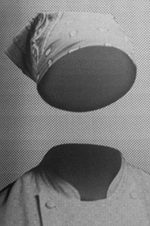Interview with Chef Duncan Gott of Taylor’s Automatic Refresher - Napa Sonoma
Katherine Martinelli: What inspired you to enter the restaurant world?
Duncan Gott: My family has always been severely into food and wine. Then after college, my favorite little delicatessen and specialty food store was closing and my brother and I asked the owner if he wanted to sell—he said Yes. That was 1993, and that’s when my career in food began. It went from there to what it is today, 10 miles away.
Antoinette Bruno: Who are some of your mentors? What have you learned from them?
DG: My father, he has a strong entrepreneurial spirit. He went to college to be an architect and decided after graduating to become a winemaker. Later he became a businessman and then a corporate executive, and now he is a consultant. And to come full circle, he wears shorts to work.
AB: In what kitchens have you staged? Which experiences were the most influential? Do you take stagiers in your kitchen?
DG: I haven’t staged professionally, but I have worked in home kitchens. I like to spend time in my family members’ kitchens like my father’s and my father in-law’s. I have taken some random classes at culinary school. I’ve also learned from the chefs who have come to work for us. I miss being in the kitchen and playing with food all day long.
AB: Do you recommend culinary school to aspiring chefs? Do you hire chefs with and without a culinary school background?
DG: No, I don’t recommend it. If we come across somebody who went to culinary school, we are more likely to hire them, but it isn't a requirement. We like to teach the skills we need.
AB: What question gives you the most insight into a cook when you’re interviewing him/her for a position in your kitchen? What sort of answer are you looking for?
DG: What dish would you cook to impress me? I’m curious to see if they would go for a dish that is simple and good or for something fancy. A great answer to that question would be a really good grilled cheese or egg salad sandwich.
AB: What is your philosophy on food and dining?
DG: I like casual dining—something I will come back to time and time again. I personally never look at prices on a menu, I just care about how good the food is.
AB: What is American cuisine to you?
DG: Comfort food.
KM: How did you come up with the concept for Taylor’s?
DG: Taylor’s was a run-down burger shack and the owner of the building asked us if we would like to lease it—we said, “Gladly!” And we changed it from the typical gross burger shack into what it is today, just by focusing on the quality. With great visibility, the restaurant business is enough to support us selling really fresh stuff.
KM: When did you know it was time to expand to multiple locations?
DG: Once we’d been in business for about four years, we got to realize what a great thing we had created and decided it might be a good time to look for new locations. Right about that time, a former competitor in the deli business asked us if we would be interested in the Ferry Building in San Francisco, which he was managing. About a year later, we had raised the funds and built restaurant number two there. As for restaurant number three, once we felt we had settled down and everything was running smoothly with number two, it was a natural step to build number three. And once we feel like the third restaurant has settled and everything is running perfectly, we’ll look into opening number four.
AB: What trends do you see emerging in the restaurant industry now?
DG: I see a heavy south-of-the-border influence. A lot of spice. Our fish tacos are not what you normally find in Southern California—they are on a corn tortilla and we put our fish in a spicy marinade with chipotle, jalapeño and cilantro. Then we serve them with sour cream, Mexican slaw and tomato salsa.
AB: What are your favorite restaurants—off the beaten path—in your city? What is your favorite dish there? What are your favorite after-hours places and bars?
DG: The Aztec Market, which is a Mexican market that makes great breakfast burritos and tacos. Via Corona is great for a plate of crispy tacos and enchiladas. I also like Tommy’s Burgers in Los Angeles, on Beverly and Rampart
AB: Have you taken any steps to become a sustainable restaurant? What?
DG: I have a goal of producing zero waste. All of our containers are 100% compostable, except for purchased beverages. Even our plastic utensils, salad bowls, fountain drinks, and sauce containers are compostable, which means if you leave it out in the sun for a couple of hours, it'll start to melt.
AB: If there were one thing you could do over, what would it be?
DG: I would have gotten out of the deli business earlier—I kept the deli open from 1992 to 2004.
AB: What is the toughest challenge facing your restaurant?
DG: Trying to keep from raising our prices when all of our costs are going up—employee, container, electricity—everything keeps going up.
AB: What’s the toughest thing you’ve had to do in your job?
DG: The toughest part about my job is utilizing my time as efficiently as possible. I am very deal-oriented, and I forget to get everything else done.
AB: What are your favorite cookbooks? Why?
DG: Joy of Cooking.
AB: Where do you like to go for culinary travel? Why?
DG: I like to go to New York for its great variety of restaurants. Just by traveling from neighborhood to neighborhood you circle the globe.
AB: What languages do you speak?
DG: Spanglish.
AB: What’s next for you?
DG: Doing the same thing and possibly opening more restaurants.






